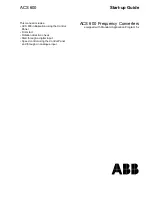
19
Audio Test Procedures
Note:
There are two different test procedures
for the Companion 5.
1. Audio test
2. USB light up and play test
Audio test
Equipment required:
1. Audio Signal Generator
2. Oscilloscope
3. Digital Multimeter
Test Set up
1. Connect the satellites to the output jacks on
the bass module.
2. Connect the control pod to the 10 pin input
connector on the bass module (the control pod
must be connected before power is applied).
3. Connect the power cord to an AC outlet.
4. Connect a signal generator to the audio
input cable and connect the cable to the input
jack on the control pod.
1. Bass Module Air Leak test
1.1
Apply a 100 mVrms, 55 Hz signal to the
input of the bass module.
1.2
Set the volume knob on the control pod to
maximum (fully clockwise), and set the bass
compensation control to it’s center detent (flat)
position.
1.3
Listen carefully for air leaks along all glued
joints, around the heat sink, connectors and at
the woofer mounting location.
PASS if no audible air leaks can be heard at a
distance > 1 ft from any exterior surface of the
Bass module.
FAIL if air leaks can be heard at a distance
> 1 ft from any exterior surface of the Bass
module.
1.4
Repair any air leaks around the heat sink
and connectors. Replace any bass module
that has air leaks around the bass box or
woofer mounting location.
2. Bass Module Sweep Test
2.1
Apply a 100 mVrms, 10 Hz signal to the
input of the bass module.
2.2
Set the volume knob on the control pod to
maximum (fully clockwise), and set the bass
compensation control to it’s center detent (flat)
position.
2.3
Listen carefully as you sweep the bass
module from 10 Hz to 500 Hz, then from 500
Hz to 10 Hz.
2.4
Listen carefully for buzzes, rattles, or other
extraneous noises from the woofer, cabinet,
plastic trim parts, or heat sink. A slight
whooshing sound from the port (at approxi-
mately 45 Hz) is acceptable.
2.5
Repair any noise heard from around the
heat sink and connectors. Replace the bass
module if it has noises from the woofer or
cabinet area.
















































